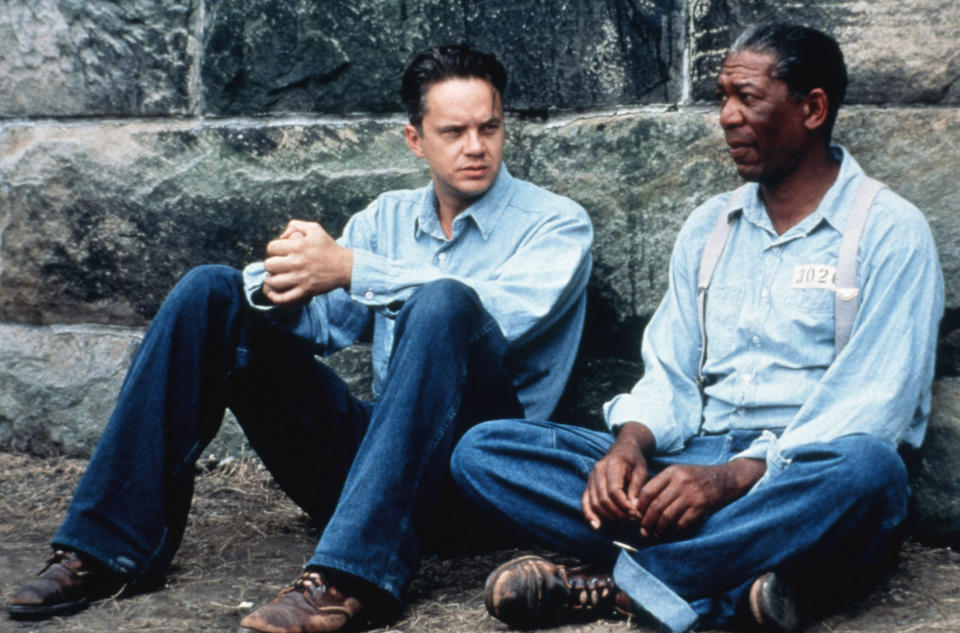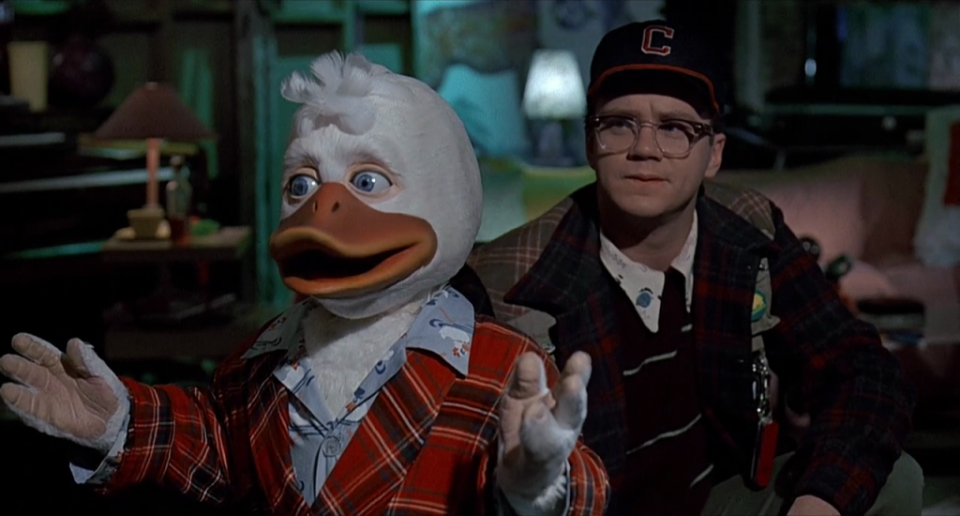Role Recall: Tim Robbins on being in the first Marvel movie, where his 'Bull Durham' character is now and the one thing he still has from 'The Shawshank Redemption'
As far as souvenirs from movie sets go, a jar filled with rocks may sound considerably less cool than a lightsaber or a suit of armor straight from Middle-earth. But for Tim Robbins, it’s a prized possession — one that was gifted to him a quarter-century ago after filming wrapped on The Shawshank Redemption. And it’s a present that perfectly complements the character he portrays in Frank Darabont’s beloved 1994 adaptation of the Stephen King novella. Sentenced to life in the titular prison for killing his wife and her lover, Robbins’s Andy Dufresne tunnels his way to freedom through the crumbling walls over the course of many years. He hides the evidence under the noses of Shawshank’s staff by dumping the rocks from that tunnel in the yard. And every day he’s reminded of that experience. “In my office, I have a jar of rocks from that yard that the extras gave me,” Robbins reveals in Yahoo Entertainment’s latest Role Recall. (Watch our interview above.)
A rock-filled jar is only one of the invaluable mementos that the Oscar-winning actor and director took away from his Shawshank experience. Robbins also carries with him a lifelong bond with Morgan Freeman, who plays Andy’s friend and prison mentor, Red. “We would have nice barbecues, and discover rural Ohio [together]. I always respected him as an actor. As a child I saw him in The Electric Company, so I was like, ‘Dude, you don’t know how good that was!’ And he was like, ‘Yes, I do.’”

Shawshank has also brought Robbins instant recognition around the world. “I find it really inspiring: a movie that was essentially ignored by audiences when it came out became such a popular film,” he says. “I’m in a film that is considered by many to be their favorite film ever, and that is so rare. Wherever I go, people stop and thank me for that film. They thank me because it touched something in them, and it changed something in them.” That reaction, in turn, motivates Robbins to continue his efforts to improve America’s criminal justice system, a task he’s pursued both through real-world activism as well as directorial efforts like his 1996 film, Dead Man Walking, and the new documentary 45 Seconds of Laughter, which recently screened at the 57th New York Film Festival. “The fact that [Shawshank] is so successful gives me great hope for us making a great difference in reforming the criminal justice system.”
Read on for some of the other highlights of our career deep dive with Robbins.
Howard the Duck (1986)

Long before Robert Downey Jr.’s Iron Man, Ben Affleck’s Daredevil or Tobey Maguire’s Spider-Man, Howard the Duck endeavored to bring a slice of the Marvel Comics universe to the big screen. Unfortunately, the George Lucas-produced movie hatched as a legendary bomb instead of an ongoing franchise. Three decades later, though, Howard the Duck has cultivated a small, but loyal fanbase of now-grown kids who saw it in theaters in 1986, and their kids who have seen it repeatedly on DVD. “To be honest, I think there’s a lot of charming things about that film,” Robbins says now, adding that it was a pretty good gig during shooting as well. “George Lucas had just done Star Wars, it was a lot of money, it was on location and I think it was the first film that the Marvel Universe did. So on paper it felt really great!”
Bull Durham (1988)

Even as ’80s comedy favorites like Dirty Rotten Scoundrels and Ghostbusters are rebooted or remade, Ron Shelton has steadfastly refused to update his hilarious baseball classic. But that hasn’t stopped Robbins from imagining what his Durham Bulls pitcher, “Nuke” LaLoosh has been up to since his million-dollar arm scored him a ticket to the Show... despite his five-cent head. “I always imagine that in the sequel, Nuke would be signing autographs at some convention to get some money. [Then] he comes back with the knuckleball. That’s the only thing he can throw, and he learns how to throw a sick knuckleball that brings him back to the majors.” We’d pay approximately $1,000,000.05 to see that movie.
Jacob’s Ladder (1990)
It’s hard to tell reality from hallucination in Adrian Lyne’s cult horror movie starring Robbins as a Vietnam veteran who may or may not be dead for the entire film. But here’s one thing that definitely isn’t real: that ice bath that poor Jacob gets submerged in was a lukewarm dip at best. “There was some ice in there, but most of it was this plastic ice,” Robbins says. “So that’s acting! I think you would put an actor into hypothermia if you put them in that much ice.”
The Player (1992)

If there were a Mount Rushmore of single-take tracking shots, The Player’s nearly eight-minute opening sequence — orchestrated by master director Robert Altman to unfold without a single cut — would be engraved in stone alongside Touch of Evil and Goodfellas. “It was a day of rehearsal for that opening shot,” Robbins remembers. “[Altman] took his time; he wanted to do it right. The other thing he told us, which was typical Altman, was ‘We know where the camera is going to be, but we have no idea what you’re going to say.’ It’s really exciting to do filmmaking like that.”
Bob Roberts (1992)
Robbins was so inspired by watching Altman work, he moved into the director’s chair almost immediately after shooting wrapped on The Player. Inspired by the political climate of the time, as well as cinema vérité documentaries like Don’t Look Back, he created a charmingly conniving Republican senatorial candidate that presaged politicians to come. “I wanted to make a film that follows a candidate who is hiding a lot of things, but his image is so charming and American that no one really looks very deeply into who he is. [The film] holds a special place in my heart ... and is really [about] where we are now.”
The Hudsucker Proxy (1994)

Sure, you might be able to pat your head and rub your stomach at the same time — but have you ever tried hula hooping while delivering a monologue? That’s the tricky skill that Robbins had to master for the Joel and Ethan Coen’s supremely underappreciated corporate satire, in which he invents those circular torture devices ... uh, we mean, toys. “Hula hoops are really hard,” he confesses. “Not to mention having to remember a whole speech and hula hoop at the same time! That was the scene I was just terrified of. I worked on it every day and couldn’t get it.” Eventually, his hula hoop teacher (yes, he had a hula hoop teacher on set) came up with a solution: just add sand. “He said we could add some weight into it, and that’s what I was able to figure out.”
Mystic River (2003)
Think that Clint Eastwood’s one-take directing style is only Hollywood legend? Think again. “Most of what you see in Mystic River is the first take,” confirms Robbins, who won a Best Supporting Actor Oscar for his role in the filmmaker’s Best Picture-nominated crime drama. “On rare occasions a second take would be allowed. When you know the rules going in, you show up ready to work. And because of this, we also worked between 9 a.m. and 2 p.m. everyday. Usually films go 12 to 14 hours!”
Read more from Yahoo Entertainment:
